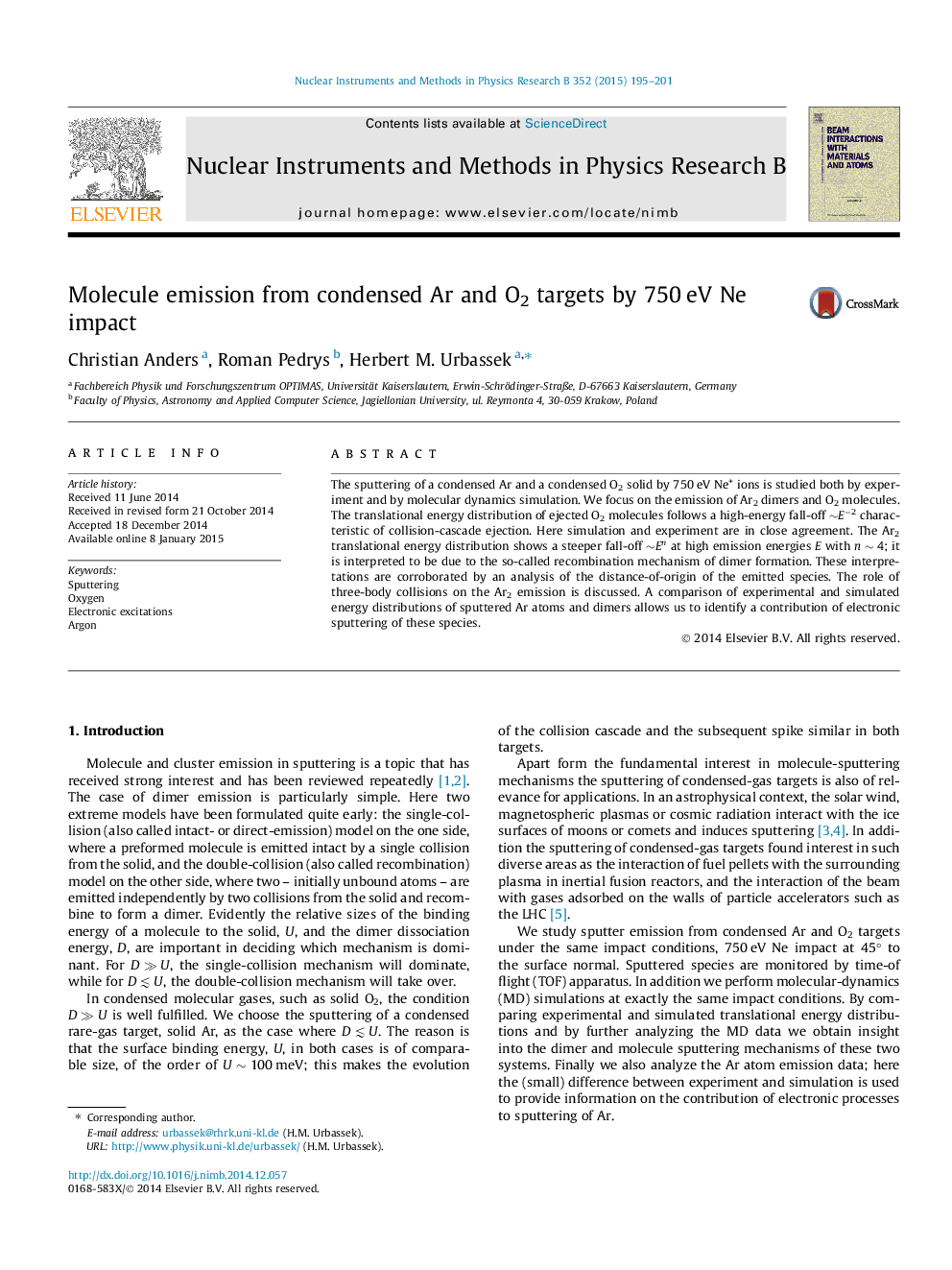| Article ID | Journal | Published Year | Pages | File Type |
|---|---|---|---|---|
| 1680535 | Nuclear Instruments and Methods in Physics Research Section B: Beam Interactions with Materials and Atoms | 2015 | 7 Pages |
Abstract
The sputtering of a condensed Ar and a condensed O2 solid by 750Â eV Ne+ ions is studied both by experiment and by molecular dynamics simulation. We focus on the emission of Ar2 dimers and O2 molecules. The translational energy distribution of ejected O2 molecules follows a high-energy fall-off â¼Eâ2 characteristic of collision-cascade ejection. Here simulation and experiment are in close agreement. The Ar2 translational energy distribution shows a steeper fall-off â¼En at high emission energies E with nâ¼4; it is interpreted to be due to the so-called recombination mechanism of dimer formation. These interpretations are corroborated by an analysis of the distance-of-origin of the emitted species. The role of three-body collisions on the Ar2 emission is discussed. A comparison of experimental and simulated energy distributions of sputtered Ar atoms and dimers allows us to identify a contribution of electronic sputtering of these species.
Related Topics
Physical Sciences and Engineering
Materials Science
Surfaces, Coatings and Films
Authors
Christian Anders, Roman Pedrys, Herbert M. Urbassek,
